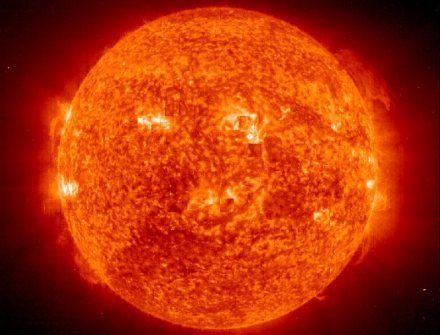
Light energy, also known as luminous energy or luminous radiation, is a type of energy that manifests itself in the form of electromagnetic waves visible to the human eye.
This phenomenon, which occurs through the emission of photons by light sources, plays a fundamental role in a wide variety of scientific, technological and industrial applications.
This article aims to analyze light energy in depth, from its origin and characteristics to its multiple applications in daily life.
Origin and characteristics
Light energy originates from the vibration of electrically charged particles, such as electrons, moving through a medium.
 When these accelerated particles change direction, they emit photons, which are particles of light. Photons travel through space in the form of electromagnetic waves, and the wavelength of these waves determines their color and energy.
When these accelerated particles change direction, they emit photons, which are particles of light. Photons travel through space in the form of electromagnetic waves, and the wavelength of these waves determines their color and energy.
Light energy is located in the electromagnetic spectrum between wavelengths of approximately 380 to 750 nanometers, which corresponds to the colors that can be perceived by the human eye.
This range of colors, which ranges from violet to red, is known as the visible spectrum. Each color in the visible spectrum has a characteristic energy, with shorter wavelength colors (violet and blue) being more energetic than longer wavelength colors (yellow and red).
Where is light energy obtained from?
Light energy is obtained mainly from sources that generate light or visible electromagnetic radiation.
Here are some of the most common sources of light energy:
Sun
 The main source of light energy on Earth is the Sun. Sunlight is electromagnetic radiation generated in the nuclear fusion process in the core of the Sun.
The main source of light energy on Earth is the Sun. Sunlight is electromagnetic radiation generated in the nuclear fusion process in the core of the Sun.
This radiation travels through space and reaches Earth, providing light and heat. In addition, it can be used to generate electricity through photovoltaic panels.
Artificial lighting
Most artificial lighting is produced through the use of electrical devices that generate light.
Incandescent light bulbs, compact fluorescent light bulbs (CFL), halogen light bulbs, and LED light bulbs are examples of devices that convert electrical energy into light energy. Each of these types of light bulbs uses different mechanisms to produce light.
Special light sources
In certain applications, specialized light sources, such as lasers and light-emitting diodes (LEDs), are used to generate concentrated, highly controllable light energy.
These sources are used in a wide range of applications, from industry to scientific research.
Chemical reactions
Some chemical reactions can produce light, a phenomenon known as chemiluminescence.
Examples of this are chemicals used in glow sticks, glow-in-the-dark toys, and certain bioluminescent marine organisms.
Combustion
In combustion processes, such as in the flames of a candle or a campfire, part of the energy released is emitted in the form of light and heat. The light energy in these cases comes from the rearrangement of atoms and molecules in hot gases.
electric shocks
 In certain types of electrical discharges, such as lightning during a thunderstorm, light energy is generated due to the excitation of particles in the atmosphere. This produces visible flashes of light in the form of rays.
In certain types of electrical discharges, such as lightning during a thunderstorm, light energy is generated due to the excitation of particles in the atmosphere. This produces visible flashes of light in the form of rays.
Applications in science and technology
Light energy has great relevance in various fields of science and technology.
One of the most notable uses is in spectroscopy, a technique that allows the analysis of the chemical composition of substances by observing the interaction between light and matter. Absorption spectroscopy, for example, is based on the ability of certain substances to absorb light at specific wavelengths, allowing the presence of chemical compounds in a sample to be identified and quantified.
In medicine, light energy is essential in medical imaging, including computed tomography (CT) and magnetic resonance imaging (MRI). These techniques use light radiation to obtain detailed images of the inside of the human body, making it easier to diagnose and treat diseases.
Additionally, this form of electromagnetic energy is crucial in the communication industry. Fiber optics, for example, relies on the transmission of light signals through glass or plastic cables to transmit information at extremely high speeds.
Light energy in everyday life
 Light energy also plays a central role in everyday life.
Light energy also plays a central role in everyday life.
Artificial lighting, present in homes, offices and public spaces, uses lamps and bulbs that generate light by converting electrical energy into light energy. Throughout history, the evolution of lighting technology has allowed for greater energy efficiency and more sustainable lighting.
Other examples, in addition to lighting, are found in electronic devices such as television screens, computer monitors and mobile phones. These devices use LCD, LED or OLED display technology that relies on light emission to display images and videos.